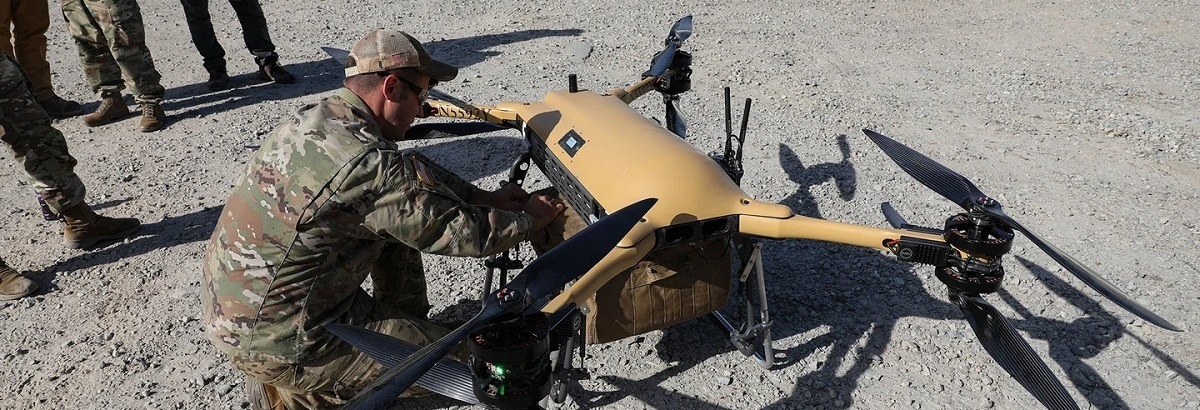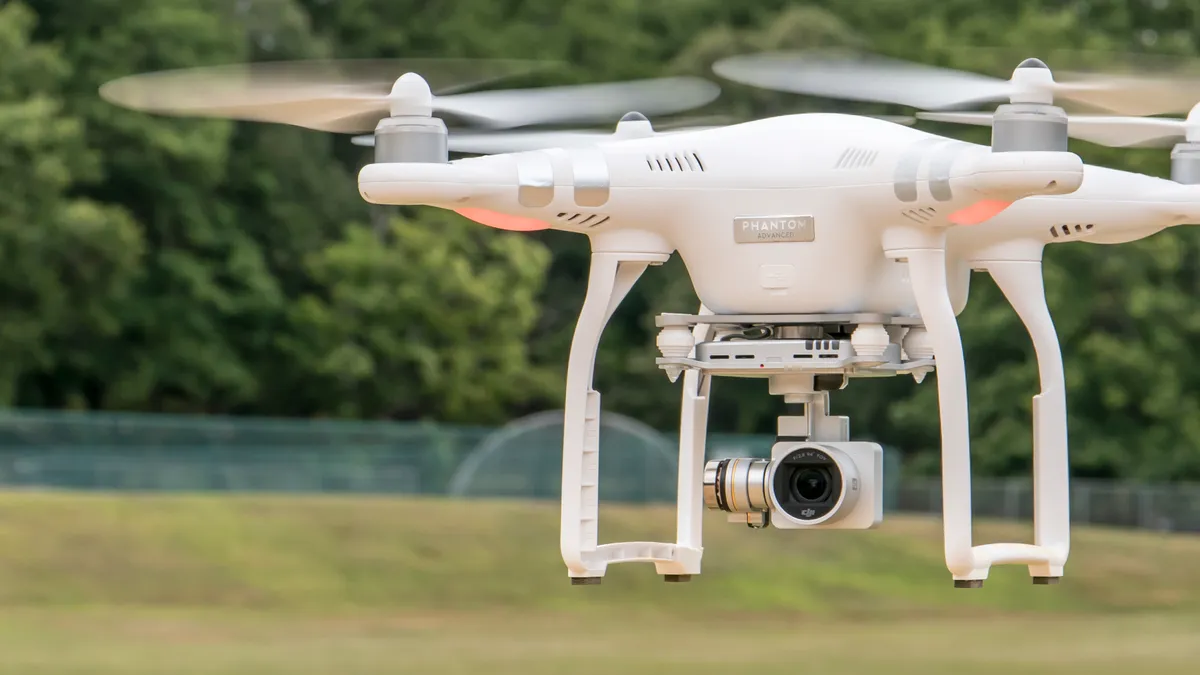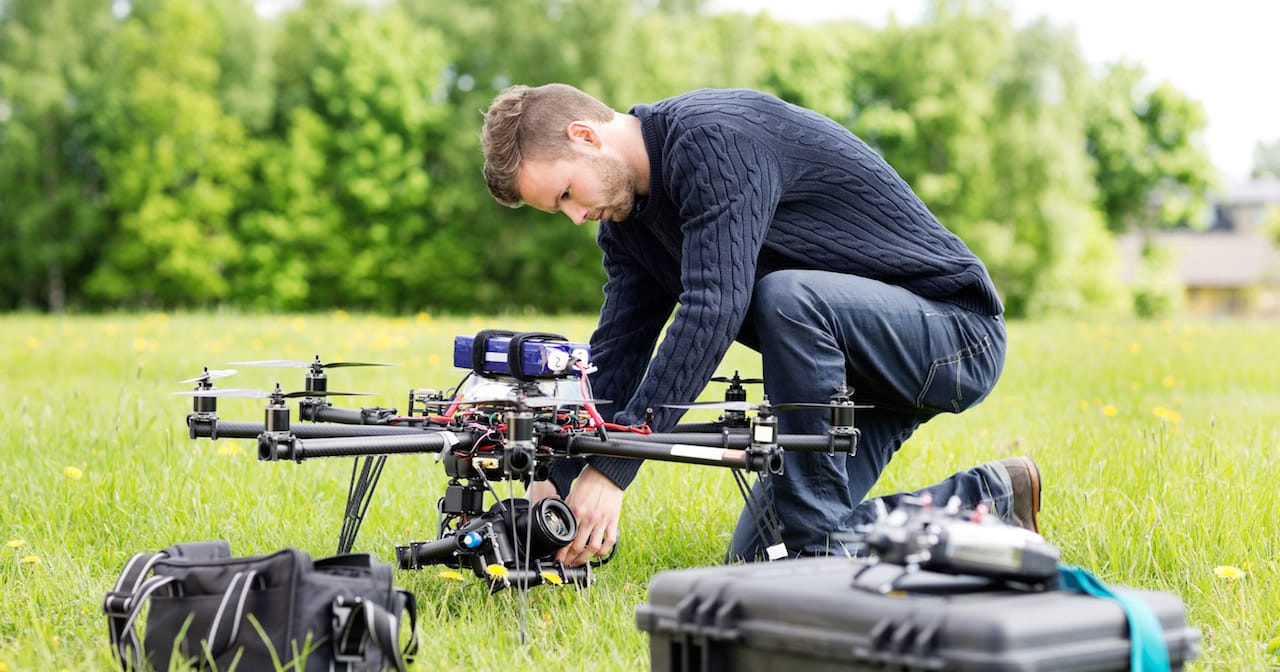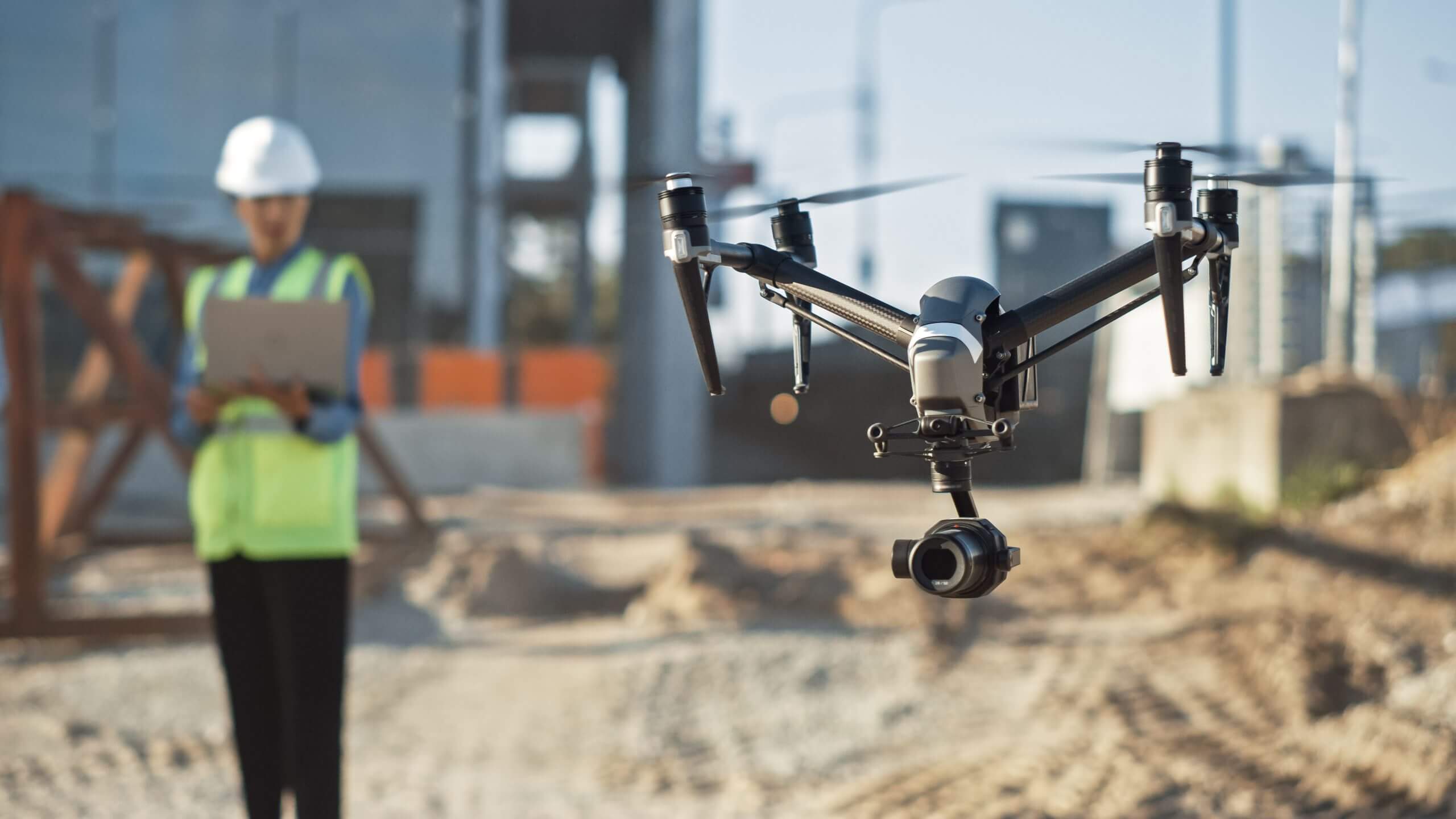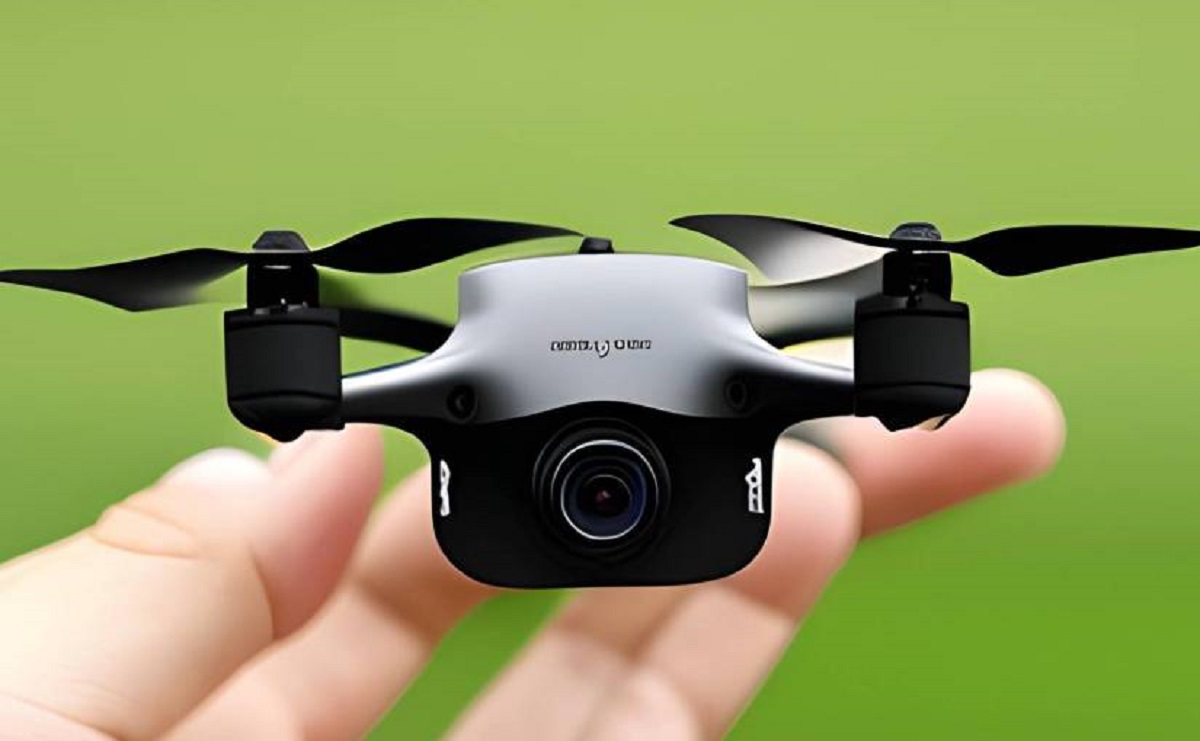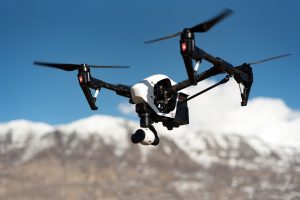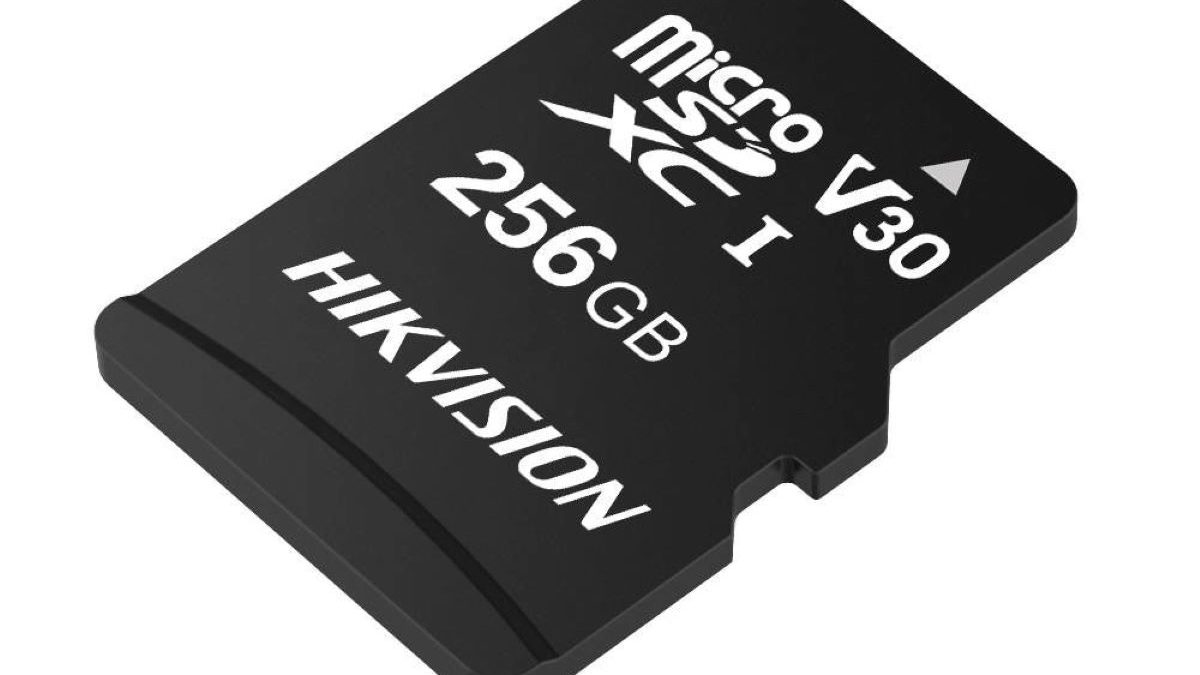Introduction
Drones, also known as unmanned aerial vehicles (UAVs), have rapidly grown in popularity and have become a ubiquitous presence in various industries. These remotely controlled aircraft have revolutionized the way we capture images and videos, deliver goods, survey landscapes, and perform tasks that were once limited to human capabilities. The drone market has witnessed an exponential growth in recent years, thanks to advancements in technology, affordability, and the ever-expanding range of applications.
This article aims to explore the size and potential of the drone market, examine its diverse applications, discuss the challenges and regulations surrounding their use, and shed light on the key players driving this industry. Moreover, we will delve into the future trends that are shaping the development of drone technology.
The growth of the drone market has been fueled by several factors. Firstly, the advancements in drone technology have made them more reliable, efficient, and versatile. Improved battery life, better propulsion systems, and enhanced stability features have allowed drones to fly longer distances, carry heavier payloads, and withstand varied weather conditions.
Secondly, the declining costs of drones have made them more accessible to both businesses and consumers. Previously, drones were predominantly used by large corporations and government agencies due to their high price tags. However, with advancements in production methods and economies of scale, prices have significantly reduced, making drones an affordable investment for individuals, small businesses, and startups.
Furthermore, the wide range of applications for drones has contributed to their growing popularity. Drones are now being utilized in industries such as photography and videography, real estate, agriculture, construction, logistics, and even in emergency services. Their ability to capture high-resolution images and videos, collect accurate data, monitor crops, deliver packages, and assist in search and rescue missions, among other functionalities, has revolutionized these sectors and opened up new possibilities.
This article will delve into the different applications of drones, highlight their uses in consumer, commercial, and military sectors, and examine the regulations and challenges faced by the drone market. Additionally, we will discuss the key players in the industry and forecast the future trends that are expected to shape the drone market in the coming years.
Growth of the Drone Market
The drone market has experienced unprecedented growth over the past decade, with projections suggesting that this trend will continue in the foreseeable future. The increased demand for drones can be attributed to several factors, including technological advancements, expanding applications, and the growing acceptance of drones as a valuable tool in various industries.
One of the primary drivers of the drone market’s growth is the advancement of drone technology itself. The continuous evolution of components such as sensors, cameras, batteries, and flight control systems has significantly improved the performance and capabilities of drones. These improvements have not only made drones more reliable and efficient but have also allowed them to perform complex tasks with greater precision.
Additionally, the decreasing costs of drone production have made them more accessible to a wider range of consumers and businesses. As manufacturing processes become more efficient and economies of scale come into play, the cost of entry into the drone market has significantly decreased. This has led to a surge in demand from consumers, businesses, and organizations looking to harness the benefits offered by drones.
The expansion of drone applications across various sectors has also contributed to the rapid growth of the market. In industries such as photography and videography, drones provide aerial perspectives that were once only achievable through expensive equipment or aircraft. Similarly, in sectors such as agriculture and land surveying, drones are increasingly being used to monitor crops, assess land conditions, and gather valuable data for analysis.
Furthermore, the commercial applications of drones have seen significant growth, particularly in the delivery and logistics sector. Major companies such as Amazon and UPS are exploring the use of drones to revolutionize their delivery operations, aiming for faster and more efficient distribution systems. This trend is likely to continue as regulations become more favorable and drones demonstrate their ability to safely transport goods.
Moreover, the military and defense sectors have been early adopters of drone technology for surveillance, reconnaissance, and offensive purposes. Military drones have proven to be invaluable assets in gathering intelligence, monitoring hostile territories, and reducing risks for human personnel. The integration of artificial intelligence and autonomous capabilities further enhances the potential of military drones in the ever-evolving landscape of warfare.
Overall, the growth of the drone market is the result of technological advancements, affordability, and the expansion of applications. As the technology continues to mature and regulations become more accommodating, drones are expected to play an increasingly significant role in various industries, contributing to the overall growth and development of the market.
Applications of Drones
Drones have revolutionized numerous industries, offering a wide range of applications that were once unimaginable. From aerial photography to infrastructure inspection, drones have become indispensable tools in various sectors, providing efficiency, cost-effectiveness, and safety advantages. Let’s explore some of the key applications of drones in different industries.
In the field of photography and videography, drones have transformed the way images and videos are captured. With their ability to fly and maneuver in the air, drones can capture stunning aerial shots that were previously only possible with helicopters or cranes. These shots are widely used in filmmaking, documentaries, real estate marketing, and sports events, providing a unique and captivating perspective.
In the agricultural industry, drones are playing a vital role in crop monitoring and management. Equipped with advanced sensors, drones can collect data on crop health, moisture levels, and nutrient distribution. This information helps farmers make precise decisions regarding irrigation, fertilization, and pest control, resulting in increased crop yields and reduced costs.
Furthermore, drones are transforming the construction industry by enhancing surveying and inspection processes. Drones equipped with high-resolution cameras or LiDAR systems can quickly and accurately survey large construction sites, capturing detailed imagery and generating 3D models. This data aids in project planning, site analysis, and monitoring progress, thereby improving efficiency and reducing project timelines.
Drones are also being increasingly utilized in infrastructure inspections. With their aerial capabilities, drones can inspect bridges, power lines, pipelines, and other critical structures, eliminating the need for humans to physically access dangerous or hard-to-reach areas. This not only reduces risks to personnel but also improves the accuracy and speed of inspections, leading to more effective maintenance and asset management.
Another area where drones are making a significant impact is in the delivery and logistics sector. Companies such as Amazon and DHL are experimenting with drone delivery systems, aiming to revolutionize the way goods are transported. Drones can quickly navigate through traffic and deliver packages over short distances, providing faster and more efficient delivery options, particularly in remote areas or during emergencies.
In the field of disaster management and emergency services, drones are proving to be invaluable tools. Equipped with thermal imaging cameras and sensors, drones can assist in search and rescue operations, locating missing individuals or identifying hazards in hazardous environments. Drones can also gather real-time data on natural disasters, enabling authorities to make informed decisions and allocate resources effectively.
These are just a few examples of the many applications of drones across various industries. As technology advances and regulations evolve, we can expect drones to continue revolutionizing how we work, capturing imaginations, and unlocking new possibilities in the years to come.
Consumer Drones
Consumer drones have become increasingly popular among hobbyists, photography enthusiasts, and individuals looking to explore the world from a different perspective. These drones are typically designed for recreational use and are equipped with features that make them easy to fly and capture stunning aerial images and videos.
One of the key features of consumer drones is their user-friendly design. These drones are compact, lightweight, and portable, allowing users to easily transport them to different locations. Additionally, they are equipped with intuitive control systems and stabilization mechanisms that make them accessible to beginners with little to no flying experience.
Consumer drones are equipped with high-resolution cameras that allow users to capture breathtaking aerial shots and videos. Some drones even offer capabilities such as 4K video recording and advanced image stabilization, ensuring exceptional image quality. This feature has made consumer drones popular among photography and videography enthusiasts who want to capture unique perspectives and create cinematic footage.
Many consumer drones come with intelligent flight modes and automatic features that enhance the user experience. These features include follow-me mode, waypoint navigation, and object tracking, allowing users to capture dynamic shots without having to manually control the drone’s movements. With these capabilities, users can focus on creative composition and storytelling rather than worrying about flying the drone.
Another aspect that sets consumer drones apart is their affordability. Compared to professional-grade drones used in industries, consumer drones are available at a fraction of the cost, making them accessible to a wider audience. This affordability has contributed to the growth of the drone market, with more individuals embracing drone technology for recreational purposes.
It’s not just photography enthusiasts who are drawn to consumer drones. They are also popular among outdoor adventurers, who use drones to capture their adventures and share them with the world. Whether it’s a hiking trip, a beach vacation, or a skiing expedition, consumer drones provide a unique perspective and allow users to immortalize their experiences from above.
Drone racing has also gained popularity in recent years, with enthusiasts building customized drones and participating in competitive races. The thrill of high-speed flights, intricate obstacle courses, and the camaraderie among racers has turned drone racing into a growing sport and community.
Overall, consumer drones have democratized aerial photography and videography, making it accessible to anyone with a passion for capturing stunning visuals. With their user-friendly design, advanced features, and affordability, consumer drones have opened up a world of creative possibilities for individuals, allowing them to explore new perspectives and share their unique visions with the world.
Commercial Drones
Commercial drones have transformed the way businesses operate, offering innovative solutions to improve efficiency, reduce costs, and enhance productivity across various industries. These drones are designed for professional use and provide advanced features and capabilities tailored to specific commercial applications.
One of the key applications of commercial drones is in aerial photography and videography. From real estate and architecture to advertising and cinematography, commercial drones capture high-quality images and videos from unique angles and perspectives. With their ability to easily navigate through different environments, drones help businesses showcase their properties, products, or services in a visually stunning and engaging manner.
The construction and infrastructure industries have also benefited from the use of commercial drones. Drones equipped with high-resolution cameras, LiDAR systems, or thermal sensors are used for site surveys, progress monitoring, and inspections. These drones can quickly collect accurate data, monitor construction projects, and identify any issues or deficiencies, saving time and reducing costs compared to traditional methods.
Another industry leveraging commercial drones is agriculture. Drones equipped with multispectral or thermal imaging sensors enable farmers to monitor crops, assess soil conditions, and make data-driven decisions regarding irrigation, fertilization, and pest control. By providing detailed insights, drones help optimize crop yields, reduce resource waste, and increase overall efficiency in agricultural operations.
Commercial drones are also widely used in the energy sector for infrastructure inspection and maintenance. Drones equipped with high-resolution cameras or thermal sensors can detect anomalies, such as leaks or structural damage, in pipelines, power lines, and wind turbines. Regular drone inspections ensure timely maintenance, minimize downtime, and enhance safety by reducing the need for human personnel to perform risky tasks.
The delivery and logistics industry is seeing a significant transformation with the integration of commercial drones. Companies like Amazon, UPS, and DHL are testing and implementing drone delivery systems, aiming for faster and more efficient delivery of packages. Commercial drones can navigate through traffic, reach remote areas, and reduce logistical costs, making them an attractive option for last-mile delivery.
Moreover, commercial drones are invaluable tools in disaster management and emergency response. Equipped with advanced imaging systems, drones assist first responders in search and rescue missions, providing real-time aerial footage, and helping to locate missing persons or assess the extent of damage in disaster-stricken areas. Drones significantly improve response times and enhance situational awareness, enabling more effective emergency operations.
The applications of commercial drones continue to expand across numerous industries, providing businesses with innovative solutions to improve operations and achieve a competitive edge. As technology advances and regulations become more favorable, the commercial drone market is expected to witness even greater adoption and evolution in the coming years.
Military Drones
Military drones, also known as unmanned aerial vehicles (UAVs), have revolutionized modern warfare, providing intelligence gathering, surveillance, reconnaissance, and offensive capabilities. These unmanned aircraft have become crucial assets in military operations, augmenting human capabilities and reducing risks for personnel in the field.
One of the primary advantages of military drones is their ability to gather intelligence. Equipped with advanced sensors, cameras, and communication systems, drones can collect real-time data and imagery from areas of interest. This data is crucial for military commanders to make informed decisions, assess enemy positions, and monitor the battlefield.
Surveillance and reconnaissance are other key functions of military drones. UAVs can fly at high altitudes, remain airborne for extended periods, and cover long distances, providing persistent surveillance capabilities. Drones equipped with high-resolution cameras or infrared sensors can gather valuable information on enemy movements, identify threats, and monitor critical infrastructure and borders.
Military drones also play a vital role in strike operations. Armed drones, also known as combat UAVs, are capable of carrying and launching precision-guided missiles or bombs. These drones provide precision strikes, reducing collateral damage and minimizing risks to human pilots. Their ability to loiter over a target area, gather information in real-time, and execute targeted strikes with accuracy makes them highly effective tools in modern warfare.
Furthermore, military drones are used for electronic warfare purposes. Certain drones are equipped with electronic warfare systems that can disrupt enemy communications, gather signals intelligence, or act as decoys to confuse enemy defenses. This enables military forces to gain a tactical advantage and disrupt the enemy’s ability to communicate and coordinate.
The use of military drones offers significant advantages on the battlefield. By replacing human pilots with unmanned aircraft, the risk to military personnel is reduced, especially in high-risk or hostile environments. Drones can be used to conduct missions in areas where human presence would be too risky or logistically challenging, such as deep behind enemy lines or in contested airspace.
Along with reducing risks, military drones also provide cost-effective solutions. Compared to manned aircraft, drones have lower operational costs and require less maintenance, making them more affordable for military forces. Moreover, drones can be rapidly deployed and used in coordination with other military assets, enhancing overall operational effectiveness and efficiency.
While military drones have proven to be invaluable tools in modern warfare, concerns have been raised regarding their ethical implications and the potential for misuse. The use of drones in targeted assassinations or civilian casualties has sparked debates and raised questions about the need for strict regulations and ethical guidelines governing their use in military operations.
Nevertheless, military drones continue to evolve and play a critical role in contemporary warfare, enabling militaries to gather intelligence, conduct surveillance, execute precision strikes, and enhance overall battlefield effectiveness. As technology advances, we can expect further improvements in drone capabilities and the integration of autonomous systems, shaping the future of military operations.
Regulations and Challenges in the Drone Market
The rapid growth of the drone market has presented both opportunities and challenges. One of the significant challenges faced by the industry is the need for regulations to ensure safe and responsible drone operations. Governments around the world have implemented varying levels of regulations to address concerns regarding privacy, airspace security, and public safety.
One of the primary concerns addressed by regulations is the safe integration of drones into the existing airspace. Authorities require drone operators to adhere to specific guidelines such as maintaining a certain altitude, avoiding restricted airspace, and ensuring visual line of sight during drone flights. These regulations aim to prevent collisions with other aircraft and protect manned aviation.
To address privacy concerns, regulations often limit the use of drones near sensitive areas, such as government buildings, airports, and private properties. Restrictions are also placed on capturing images or videos in a manner that violates privacy rights. These regulations are crucial to strike a balance between the benefits that drones offer and the protection of individuals’ privacy.
Another challenge in the drone market is education and pilot training. As drones become more accessible, it is important for drone operators to have a sufficient understanding of regulations, flight operations, and safety procedures. Many countries have introduced certifications and licensing requirements to ensure that drone pilots have the necessary knowledge and skills to operate drones safely and responsibly.
In addition to regulations, other challenges in the drone market include limited battery life and flight range. While drone technology has advanced significantly, the current limitations in battery technology pose restrictions on the amount of time drones can stay airborne. Improving battery life and flight range will enable drones to operate for longer durations and fly longer distances, opening up new applications and opportunities.
Furthermore, the challenge of public perception also poses a hurdle to the drone market. Negative incidents, such as privacy infringements or unauthorized flights in restricted areas, can lead to concerns and public distrust. It is important for the industry to create awareness about responsible drone use, highlight the benefits and positive applications of drones, and address any concerns to build public acceptance and trust.
The development of effective anti-drone technologies and countermeasures is another challenge in the drone market. As drones become more prevalent, there is a need to ensure the security and safety of critical infrastructure and public spaces. Effective methods to detect, neutralize, or mitigate any potential risks associated with malicious use of drones are crucial to maintain public safety and security.
Addressing these challenges requires collaboration among industry stakeholders, governments, and regulatory bodies. An ongoing dialogue and partnership are essential to develop effective regulations, foster innovation, and ensure the responsible and sustainable growth of the drone market.
Key Players in the Drone Market
The drone market is highly competitive and consists of several key players that are driving innovation, shaping the industry, and offering a wide range of drone solutions. These players have made significant contributions to the development and advancement of drone technology across various sectors.
DJI is one of the leading and most recognizable names in the drone industry. Known for its consumer and professional-grade drones, DJI has captured a significant market share with its high-quality products. Their drones are equipped with advanced features, intelligent flight modes, and high-resolution cameras, making them popular among hobbyists, photographers, and videographers.
Parrot, a French company, is another major player in the drone market. They offer a range of drones suitable for both consumer and professional use. Parrot’s drones are known for their user-friendly design, advanced flight stabilization, and immersive flying experience. Their consumer-focused drones are equipped with high-quality cameras and offer easy-to-use features, making them accessible to beginners and enthusiasts.
In the commercial drone sector, companies like Kespry, PrecisionHawk, and Aerovironment are leading the way. Kespry specializes in industrial drone solutions, focusing on sectors such as construction, mining, and insurance. PrecisionHawk offers advanced drone platforms with sophisticated sensors and data analytics capabilities, catering to industries such as agriculture, energy, and infrastructure. Aerovironment focuses on defense and military applications, specializing in small, tactical unmanned aircraft systems.
There are also key players in the drone market that cater to specific industries or applications. Skydio, for example, focuses on autonomous drones for the enterprise market, with applications in areas such as infrastructure inspection and public safety. Flyability specializes in drones designed for indoor inspections and confined spaces, utilizing collision-tolerant technology. These players demonstrate the diversity of drone offerings tailored to specific industry needs.
Besides drone manufacturers, there are companies specializing in drone services and solutions. These companies provide aerial data collection, mapping, surveying, and inspection services using drones. Examples include DroneDeploy, senseFly, and Measure. These companies offer end-to-end solutions, combining drones, software, and data analytics to address specific industry needs and provide actionable insights.
It’s worth mentioning that several technology giants, such as Amazon, Google, and Intel, are also investing heavily in the drone market. Amazon’s Prime Air aims to revolutionize the delivery industry, while Google’s Project Wing explores drone delivery solutions. Intel focuses on drone technology and provides hardware and software solutions for drone operations and performance.
These key players, along with many other innovative companies, continue to push the boundaries of drone technology and drive the growth of the drone market. Their contributions in terms of product development, technological advancements, and industry partnerships are shaping the future of drones and expanding the range of applications where drones are making a significant impact.
Future Trends in the Drone Market
The drone market is poised for continued growth and innovation, with several exciting trends expected to shape the industry in the coming years. These trends are driven by technological advancements, regulatory changes, and evolving market demands, and they hold the potential to further expand the applications, capabilities, and utilization of drones.
One of the key future trends in the drone market is the integration of artificial intelligence (AI) and machine learning (ML) technologies. Drones equipped with AI algorithms will be able to analyze data in real-time, enabling autonomous decision-making and adaptive behavior. This will enhance the capabilities of drones in various industries such as agriculture, infrastructure inspection, and public safety, allowing them to gather and process data more efficiently and effectively.
The development of advanced sensors and payloads is another future trend in the drone market. As technology evolves, more sophisticated sensors, such as hyperspectral cameras, LiDAR systems, and gas detectors, will become more accessible, enabling drones to gather more precise and specialized data. This will open up new opportunities in sectors like environmental monitoring, construction site analysis, and infrastructure maintenance.
Furthermore, the miniaturization of drone technology will lead to the emergence of smaller and more compact drones. These drones will be agile, highly maneuverable, and able to access confined or hard-to-reach spaces. Miniaturized drones will find applications in areas such as indoor inspections, search and rescue missions, and autonomous surveillance, enhancing their versatility and effectiveness in diverse environments.
Unmanned Traffic Management (UTM) systems are expected to gain prominence as the number of drones in the airspace increases. UTM systems will enable the safe integration of drones into existing airspace, providing real-time information on drone flights, monitoring airspace congestion, and managing drone traffic. This will be crucial in enabling widespread adoption of drone delivery services and other operations that require coordination and efficient use of airspace.
Another trend on the horizon is the development of beyond visual line of sight (BVLOS) capabilities. Regulatory changes and advancements in drone technology will pave the way for BVLOS flights, allowing drones to operate at longer distances and without direct visual contact with the operator. This will open up opportunities for applications such as long-range inspections, precision agriculture, and remote surveillance.
The use of swarming technology is also anticipated to increase. Swarms of drones working together can accomplish complex tasks more efficiently than individual drones. Swarms can be used for tasks like search and rescue operations, environmental monitoring, and crop pollination. This collaborative approach will result in improved efficiency, increased data collection capabilities, and enhanced operational effectiveness.
Lastly, the adoption of drone-as-a-service (DaaS) models is expected to increase in the future. DaaS providers offer drone platforms, software, and data analytics as a service, allowing businesses to leverage drone technology without the need for significant upfront investment. This model provides flexibility, scalability, and cost savings to businesses and enables them to access the benefits of drone technology without the burden of ownership and operation.
These future trends in the drone market hold immense potential for transforming industries, enabling new applications, and driving economic growth. As technology continues to evolve and regulations adapt to accommodate drone operations, we can expect to see further advancements and innovations in the drone market, shaping the way we live, work, and interact with our world.
Conclusion
The drone market has experienced remarkable growth and continues to evolve at a rapid pace. From consumer drones to commercial and military applications, drones have transformed various industries, offering innovative solutions, improving efficiency, and expanding the realm of possibilities. Technological advancements, affordability, and the expanding range of applications have contributed to the widespread adoption of drones and their increasing importance in our daily lives.
The future of the drone market looks promising, with trends such as artificial intelligence, advanced sensors, miniaturization, unmanned traffic management, beyond visual line of sight capabilities, swarming technology, and drone-as-a-service models shaping the industry. These trends hold the potential to further enhance the capabilities and applications of drones, revolutionizing industries and enabling new levels of efficiency, safety, and productivity.
However, along with these exciting developments, challenges remain. The need for regulations to ensure safe and responsible drone operations, addressing concerns regarding privacy, airspace security, and public safety, is vital. Education and pilot training play a crucial role in fostering responsible drone use, while technological improvements, such as extended battery life and flight range, will continue to push the boundaries of what drones can accomplish.
Moreover, collaboration among industry stakeholders, governments, and regulatory bodies is essential to strike a balance between fostering innovation and ensuring the safe integration of drones into our society. Through ongoing dialogue, partnerships, and the establishment of ethical guidelines, the drone market can continue to thrive while addressing the concerns and building public acceptance and trust.
In conclusion, the drone market has undergone significant growth and is set to continue expanding in the future. As technology advances, regulations evolve, and market demands change, drones will play an increasingly vital role in transforming industries, providing innovative solutions, and shaping the way we live and work. With responsible use, continued innovation, and collaboration within the industry, the future of the drone market looks promising, promising a world in which drones play a significant role in various aspects of our lives.









